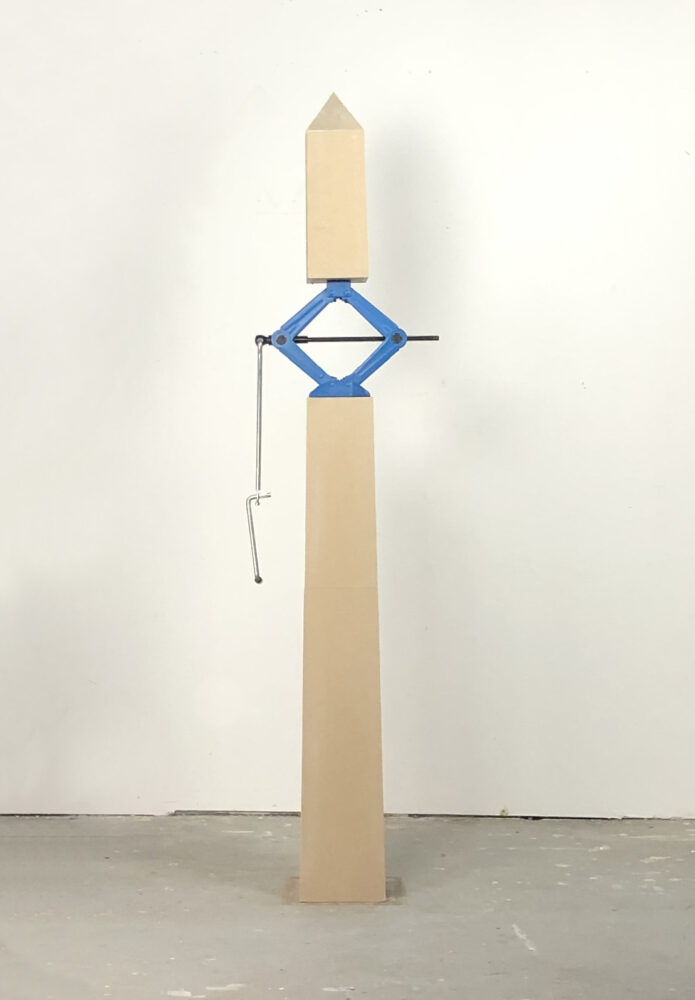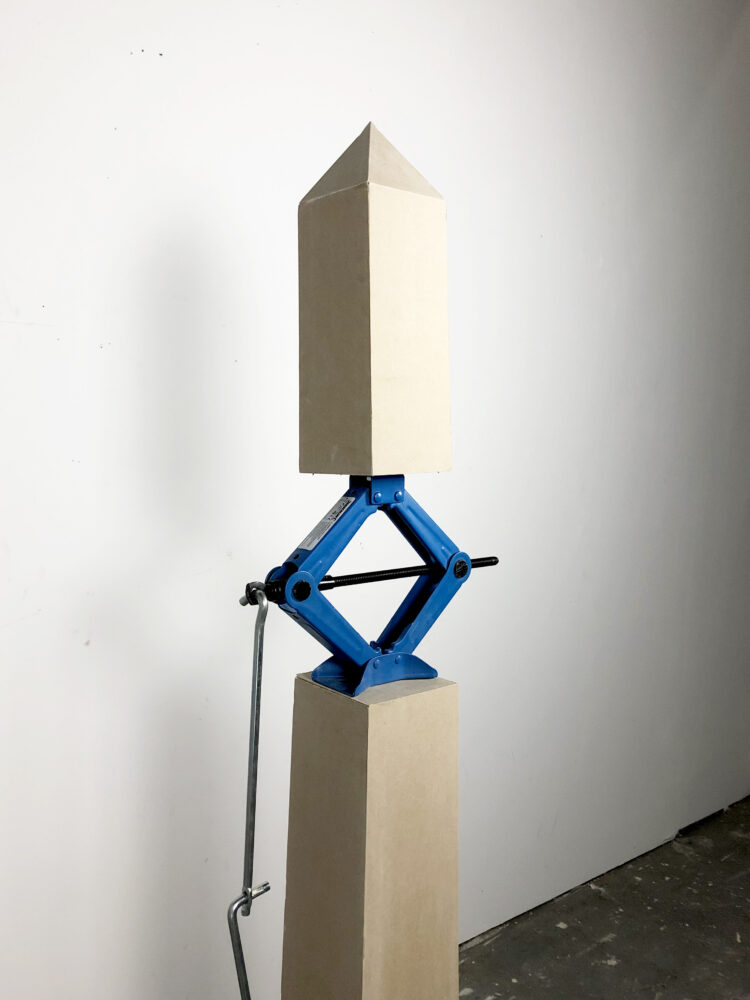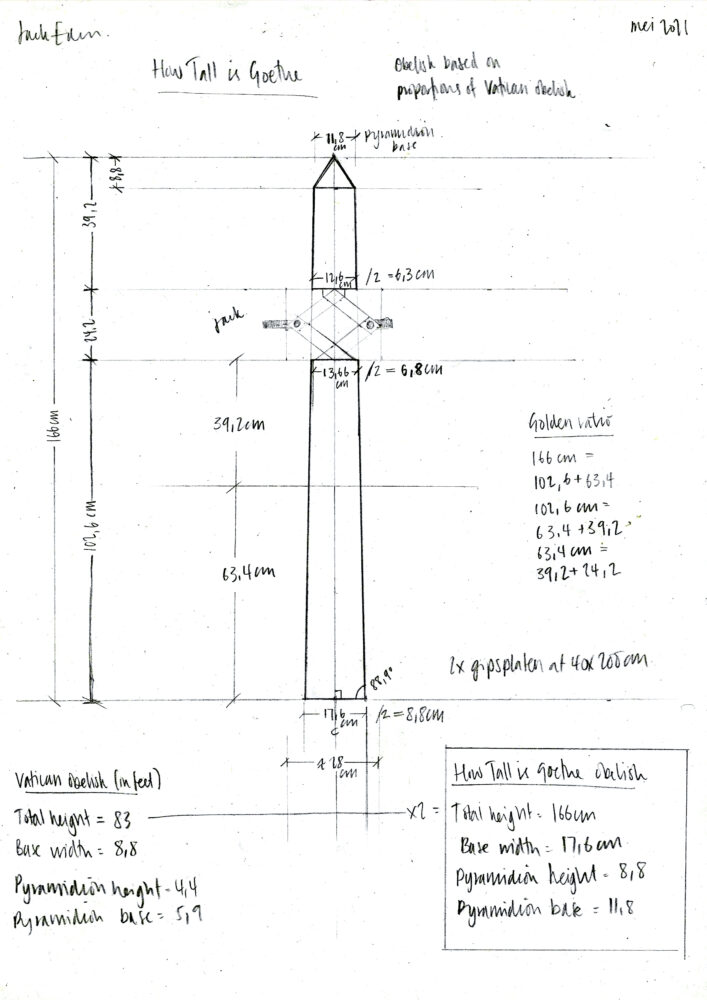How Tall is Goethe

Responding to Johann Heinrich Wilhem Tischbein’s painting Goethe in the Roman Campagne, this sculpture explores the problem of objectively documenting human stature. Corrupted by perception, ego, idolatry, celebrity and masculinity, it would have been impossible (even in 1787) to create an accurate image of the famous German writer Johann Wolfgang von Goethe.
Based on the dimensions of an ancient obelisk in Rome, this plasterboard monument precisely measures the commonly perceived height of Goethe – 166 cm. Bisected with a scissor jack used for elevating heavy objects, the possibility of increasing and decreasing scale remains ever-present but problematic. A twist of the jack would stretch this phallus – swell its masculinity – yet as it becomes taller, its proportions become distorted and it begins to topple. This, in turn, alludes to the unusual way Tischbein has painted Goethe, twisted at the hip as he takes the weight off his two left feet.

